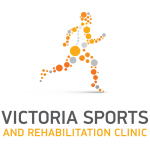Osteopathy For Mothers and Children
Pregnancy and the birthing experience can affect both a mother and a child’s musculoskeletal system in a range of different ways. Depending on the type of birth (natural or caesarean) both can have an impact on the body’s structure and the way it functions.
When having osteopathic treatment during pregnancy, your practitioner will focus on improving your mobility in preparation for birth and reducing any compensatory pain you may experience in areas such as your mid-back, lower-back, neck, legs and pelvis due to the changes in your body and the increasing elasticity of your muscles, tendons, ligaments and tissues.
Osteopathic treatment may also assist with musculoskeletal dysfunction you may experience after the birthing process. After the birth, you may start to notice postural changes as your body starts to adapt back to its pre-pregnancy structure. You may also notice the function of feeding and carrying your baby will now place different stresses on your body, which may result in issues in the upper back and neck due to these repetitive movements.
For a baby, being in utero and the birthing process may also place stresses on their musculoskeletal system due to being in varying positions for periods of time. Different positions during presentation such as anterior (face-down) and posterior (face-up) can each have an impact and could place different strains (extension or flexion) on the neck, shoulders, hips and pelvis as the baby is coming out of the birthing canal.
As a newborn develops into a toddler, the stresses placed on the body become gravitational as they start to crawl, pull themselves up and commence walking.
You may start to notice other things such as turned in feet (which may be hip or ankle dysfunction) or asymmetrical crawling patterns. Osteopaths treat people across their lifespan, so as your newborn grows into the toddler phase they will be looking at their progressions with musculoskeletal development and function.
-
What Can I Expect At The First Consultation?
- Generally the first visit will take a full hour
- A full postnatal medical history will be asked including:
- History of the presenting complaint
- A detailed pregnancy and birth history
- Examination- including coordination, posture, limb positioning
- Based on these examination findings further testing may be carried out for further diagnosis or referral to another healthcare professional may be made.
-
What Osteopathic Treatment Techniques Are Used?
- Osteopaths are government registered, primary healthcare professionals, they use very gentle treatment techniques for children which may include soft tissue massage and passive range of motion techniques.
